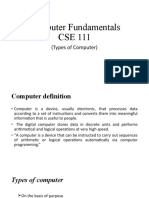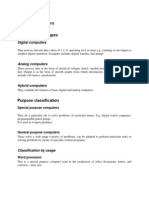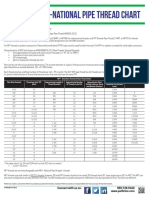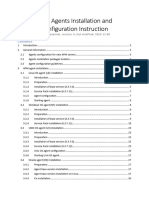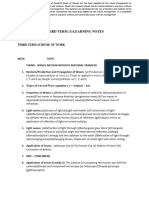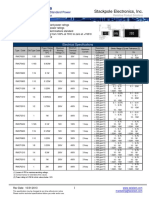0% found this document useful (0 votes)
13 views15 pagesTypes of Computer
The document provides an overview of computers, defining them as digital electronic devices that process data into meaningful information. It categorizes computers based on size (e.g., supercomputers, mainframe computers, minicomputers, workstations, personal computers) and data handling capabilities (analog, digital, hybrid). Additionally, it details the characteristics, uses, and classifications of each type, along with sample questions and FAQs related to the topic.
Uploaded by
aichabouatia77Copyright
© © All Rights Reserved
We take content rights seriously. If you suspect this is your content, claim it here.
Available Formats
Download as DOCX, PDF, TXT or read online on Scribd
0% found this document useful (0 votes)
13 views15 pagesTypes of Computer
The document provides an overview of computers, defining them as digital electronic devices that process data into meaningful information. It categorizes computers based on size (e.g., supercomputers, mainframe computers, minicomputers, workstations, personal computers) and data handling capabilities (analog, digital, hybrid). Additionally, it details the characteristics, uses, and classifications of each type, along with sample questions and FAQs related to the topic.
Uploaded by
aichabouatia77Copyright
© © All Rights Reserved
We take content rights seriously. If you suspect this is your content, claim it here.
Available Formats
Download as DOCX, PDF, TXT or read online on Scribd
/ 15


































